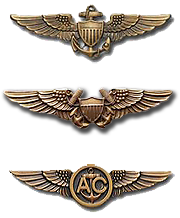Aircraft and Crew Lost - 1945

From the VPB-205 War Diary, 2 October 1945:
"At 0207071 (PBM) Bu. No. 59336, with Lt. G. D. LIZER, Patrol Plane Commander, and Rear Admiral W. D. SAMPLE and Capt. C. C. MC DONALD, Passengers, departed on inspection flight of local area. When the plane failed to return at scheduled time and efforts to contact same proved negative, Bu. No. 59265, Lt. DUFFY, and Bu. No. 59266, Lt(jg) MORGAN, were ordered to search area until sunset. Results were negative."
The report continues that three more missions were launched that day; Lt(jg) Kelliher in 59001, Lt. Burger in 84610, and Lt(jg) Leete in 59013. Negative results. The next day eight search missions were flown with negative results. Appendix C contains the REPORT OF MISSING PERSONNEL. "On 2 October 1945, the squadron suffered what was to be its greatest tragedy of the Pacific tour.
On that date Lieutenant Gilbert Delos LIZER, with Ensign Kazimer OLENSKI as co-pilot, departed on a routine surveillance flight in a PBM-5, Bureau Number 59336. Passengers for this flight were Rear Admiral W. D. SAMPLE, USN, and Captain Charles C. McDONALD, USN. The crew consisted of: Frank Frederick KISSINGER AMM2C, Jack Conrad MALLORY AMMF3C, Herbert Andrew KILGOUR Jr. ARM2C, Donald Harry HAWTHORNE ARM3C, Luther Earl SHAW Jr. AOM3C, Albert "J" SCHALE Jr. AMMF3C and Robert Herbert JOHNSON S1C.
"The takeoff was at 0702 on the morning of 2 October 1945 and at 0755 the plane was observed heading away from Kobe which is some 30 miles to the North of the takeoff area at Wakayama, Japan. That was the last contact with the plane either by radio or sight. At 1500, the estimated time of return of the plane, attempts were made by the control tower to contact it by radio. When the tower was unable to establish communications with the aircraft, two planes were dispatched to make a thorough search, but to no avail. "The following day the search by every available plane and man was continued, weather permitting, until 13 October 1945, when, with all results negative, the search was ordered discontinued and the above named men were declared missing."
As stated above, Lt(jg) Brad Leete was the PPC of one of the search aircraft. He had this to say about what he calls a "Needless Tragedy":
"In October 1945 USS St. George and VPB-205 had moved from Okinawa to Wakayama, Japan. "On one particular day, Lt. G. D. Lizer, who was the Flight Officer, approached me and said, rather sarcastically, ‘Leete, there’s an admiral flying with us tomorrow and I’m not going to let him fly with you… I’m going to give him a good flight.’ I shrugged it off, because, with his position, there was nothing I could do about it. "The next morning, Lt. Lizer, his crew and the admiral, took off, followed one minute later by our flight. (WWII had ended and one of Lt. Lizer’s co-pilots had enough discharge points, so he did not have to fly, but he volunteered.) I do not know the purpose of the admiral’s flight, but I suspect it was to get the flight time for extra pay.
"We each went our separate ways on what appeared to be a most gorgeous, picturesque day. The only problem was that it was unusually turbulent. Remembering my earlier training, I made flat, skidding turns most of the day to keep my wings level. After the end of our flight, we were being taken by personnel boat back to St. George. I looked up and saw a large number of people lining the railing and looking down upon us. I wondered what I could have done wrong, but what they wanted to know was whether we had seen or heard from the other plane. The answers were negative.
"For days afterward, ASR flights were dispatched but nothing was ever found. We will never know what really happened that day but, because of my experience, I strongly suspect the weather was a factor. On my final Navy flight on December 22, 1945, I arrived back at NAS Norfolk, and my CO approached as our plane was being towed onto the ramp. He said he could get me home for Christmas if I signed up for six more months. I said, ‘No, Sir, I’ve missed three already; one more won’t make that much difference.’ I was partly influenced by what happened on that day in October.
"I arrived home in Massachusetts on December 28th and celebrated Christmas three days late.
Lt. Owen Duffy also piloted several search flights, and has added his recollections:
"My crew was stand-by for Lt. Lizer’s 8 hour orientation flight. His orders were to report his position every hour. At approximately 1000 I went to the ship’s radio shack and requested Lt. Lizer’s last reported position. I was told there were no communications since takeoff voice radio. The flight was now out two hours. Ship’s radio tried to reach them with no luck. I alerted my skipper and we approached the ship’s Captain. I told him of my findings and requested permission to takeoff and search. Request denied. I went through the same procedure at about 1200 with the same answer. "At approximately 1630 I was ordered out to search; the flight was overdue at that time. My takeoff was good until I was about 45 feet airborne, still in good attitude, when we were hit by a strong downdraft, slamming us down on the sea doing about 100 knots — fast approaching the reefs at the mountain approach. I gave full pitch and throttles and made a radical 90-degree starboard turn just above the water.
"Because of eminent approach of darkness, my flight was limited to 1 hour and, upon landing, was forced to search out a buoy with the aid of an Aldis Lamp. I’m positive Lt. Lizer’s flight was terminated on or shortly after takeoff. And I’m sure he was overtaken by a downdraft.
"Navy records will reveal the name of the mountain (ref. Adm Sample) on which the wreckage was found in dense forest in 1946, 1947 or 1948. "The crash was Operational and NOT pilot error. If Lt. Lizer had the time I had, there would have been no trouble." Owen Duffy USNR 129965
The Editor thanks both Brad and Owen for their first-hand recollections of a tragic event. Hopefully the Navy Historical Center will be able to add more to the final chapter of where, how, and what happened. We await their response to a request for info. If any member can add any details to this tragic event, please consider sending your recollections to the Editor for inclusion in our archives and a continuation of this article.
And There Is More... The following additional information was provided by Jarrell Yates, who received it from Dominic Gangmi — who received it from Walt Posey: An article in a May 1948 Arlington, Virginia local newspaper states, in part…An admiral and his naval air crew, who died together in a plane crash in Japan, were among 16 Navy war victims reburied in two graves in Arlington Cemetery yesterday. Rear Admiral William D. Sample of Atlanta, Ga., a wartime aircraft carrier skipper, was killed when his patrol plane crashed near Honshu on October 2, 1945. Others who lost their lives in the same crash were buried with him. The article lists, in addition to the admiral, Captain McDonald (commander of the aircraft carrier Suwanee), Lizer, Olenski, Hawthorne, Kilgour, Kissinger, Mallory and Schale. Others from the crash were not mentioned; it is known that AOM3C Shaw was not interred in Arlington. The article pictured a grave marker with the above names on it. Bruce Barth, PBM historian, added one vital piece of the story when he responded to the editor’s query. He sent word that, according to some old damaged microfilm, PBM-5; BuNo 59336 of VPB-205, missing on patrol 10/2/45; was found 19 November 1948 five miles northeast of (Hmoa Mountain ?), Honshu, Japan.
Send questions, comments or suggestions regarding this website to: vp45assoc@vp45association.org
Copyright © 2005 PATRON FOUR FIVE ASSOCIATION


